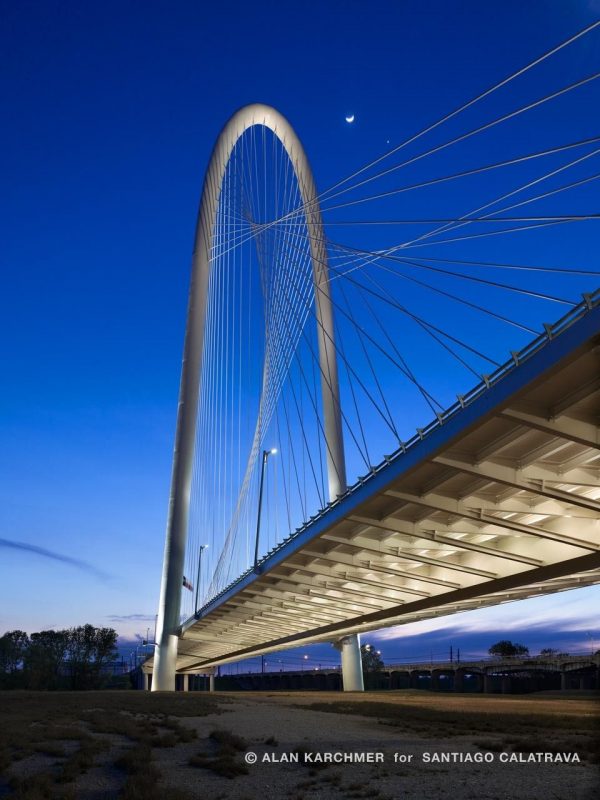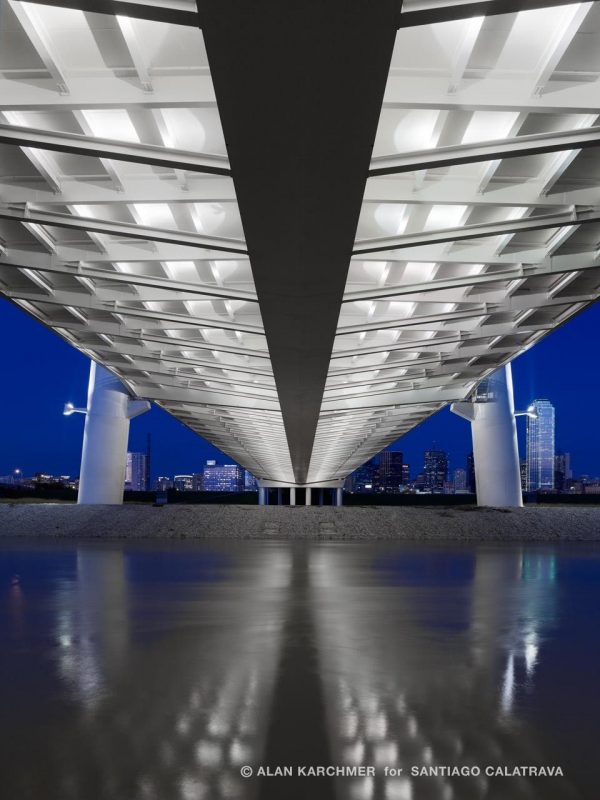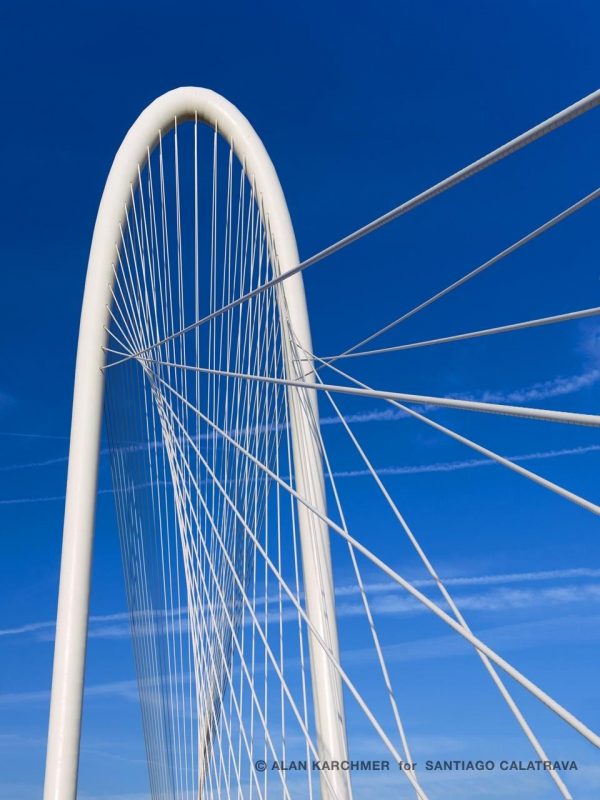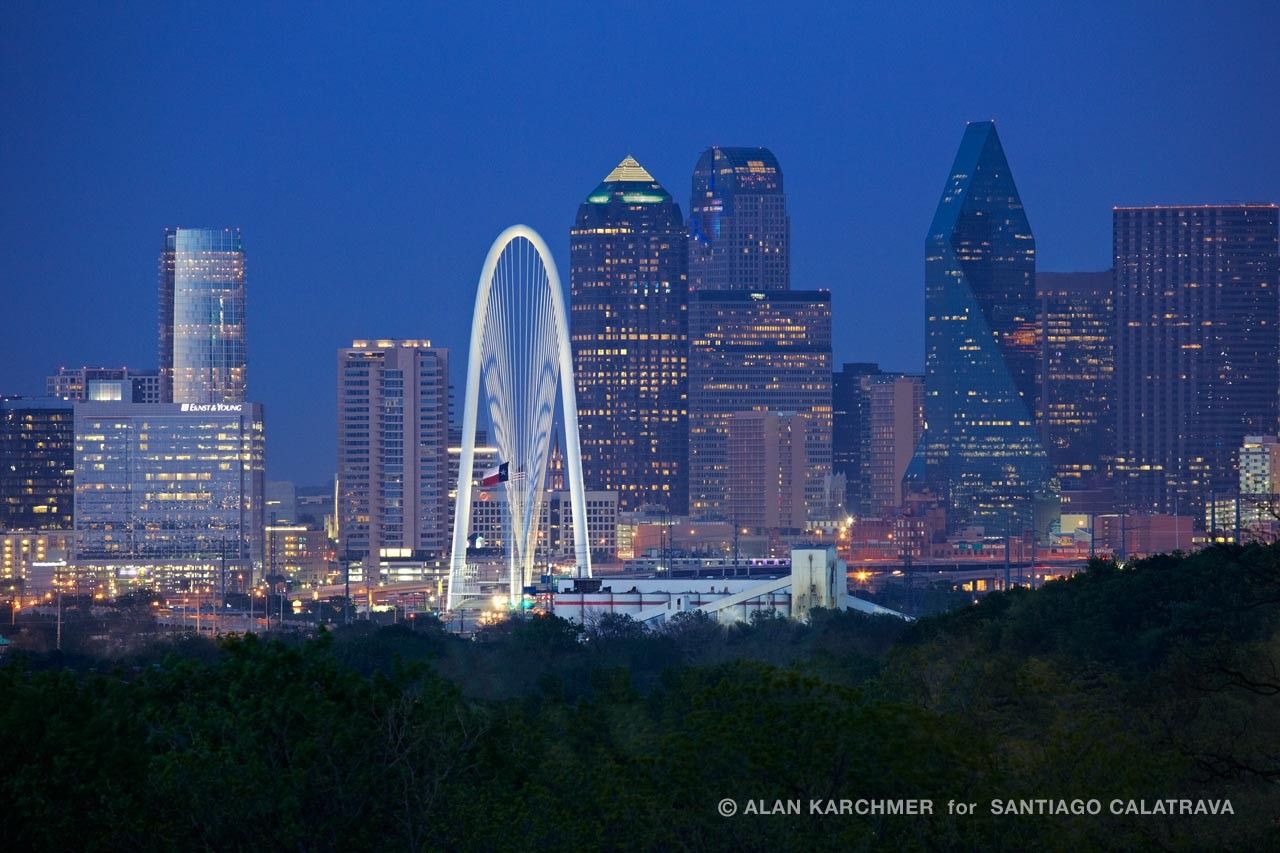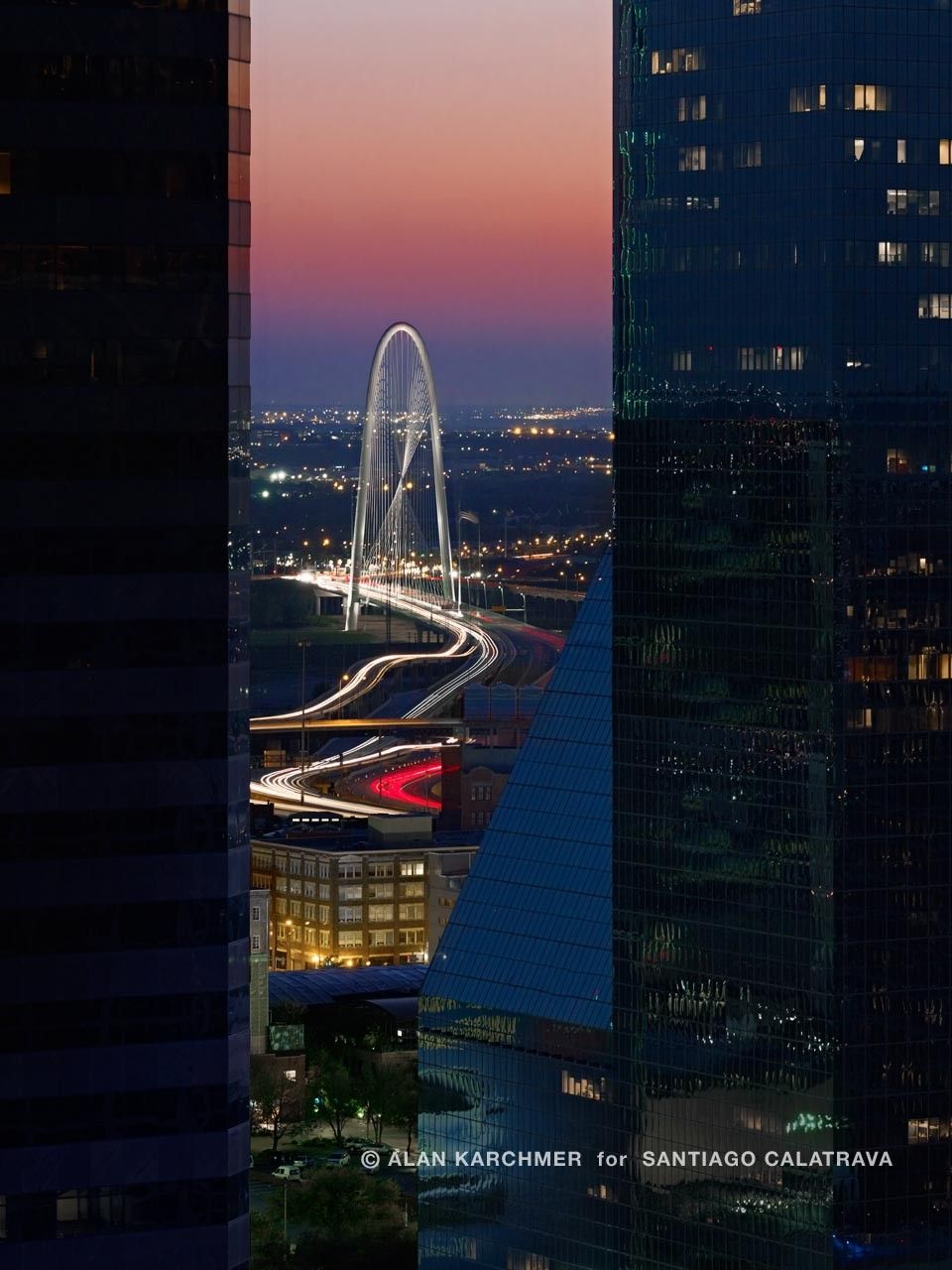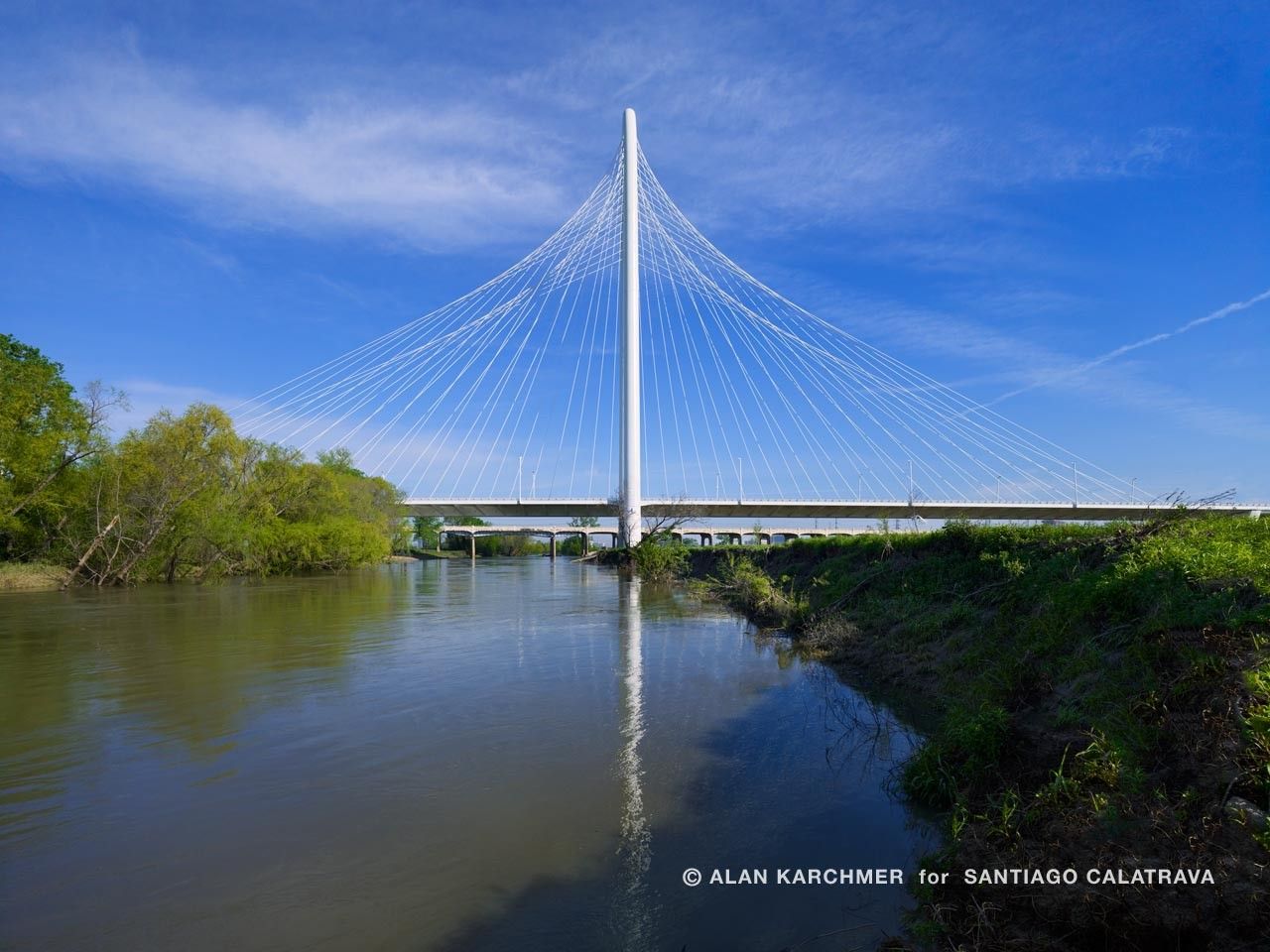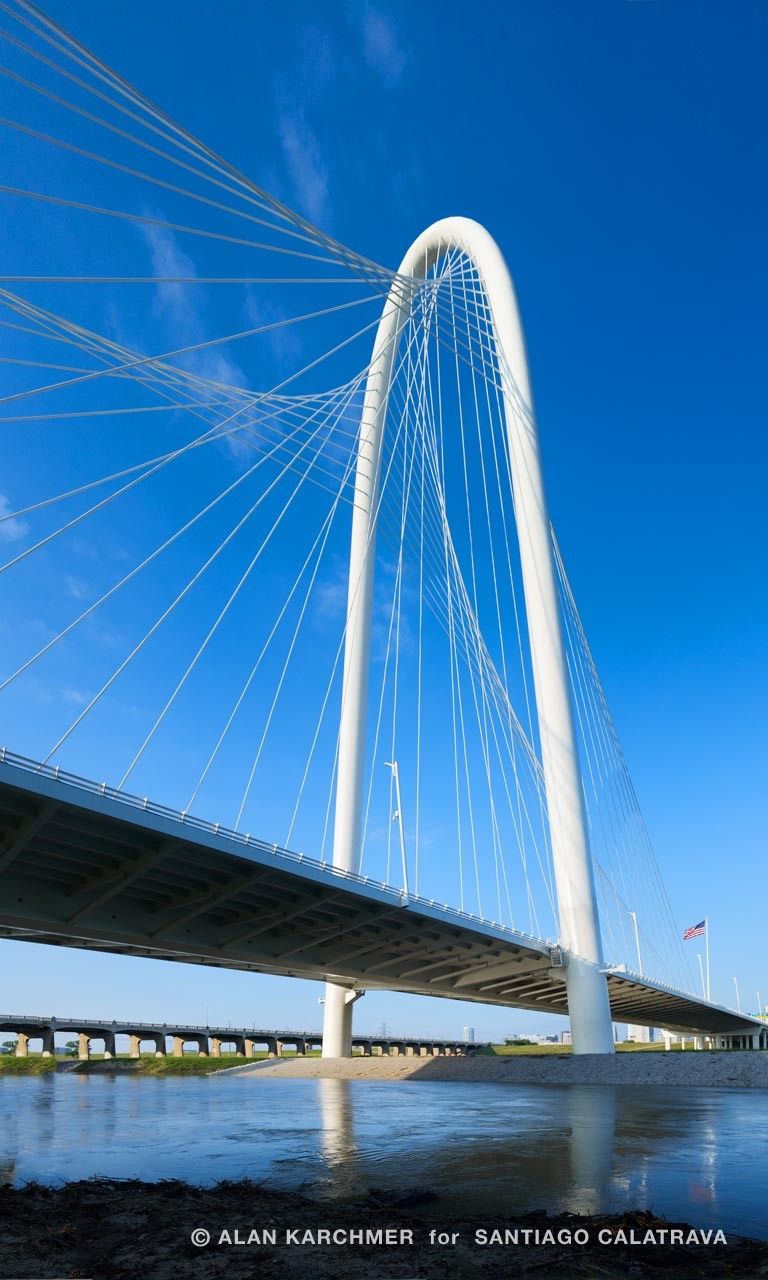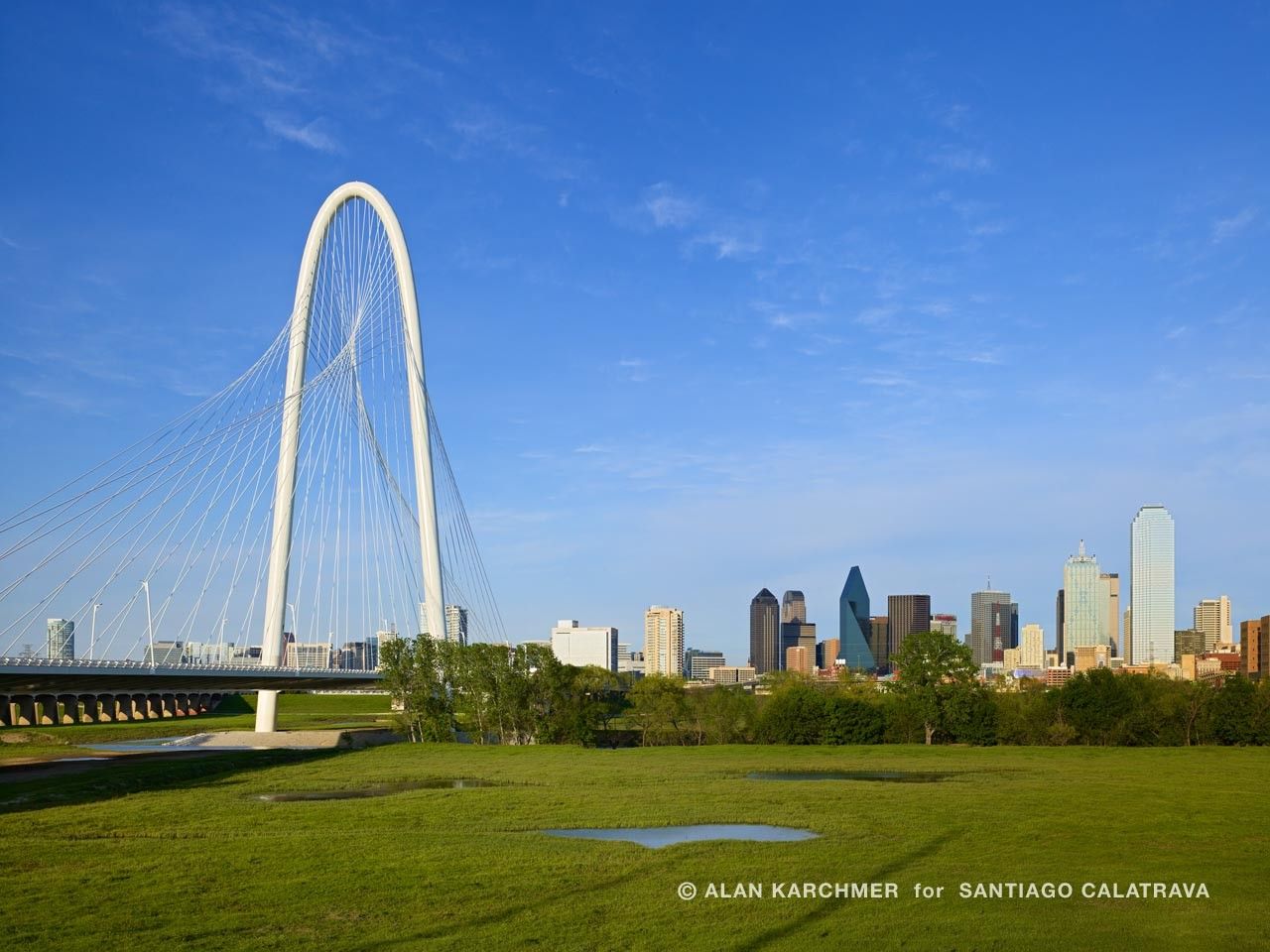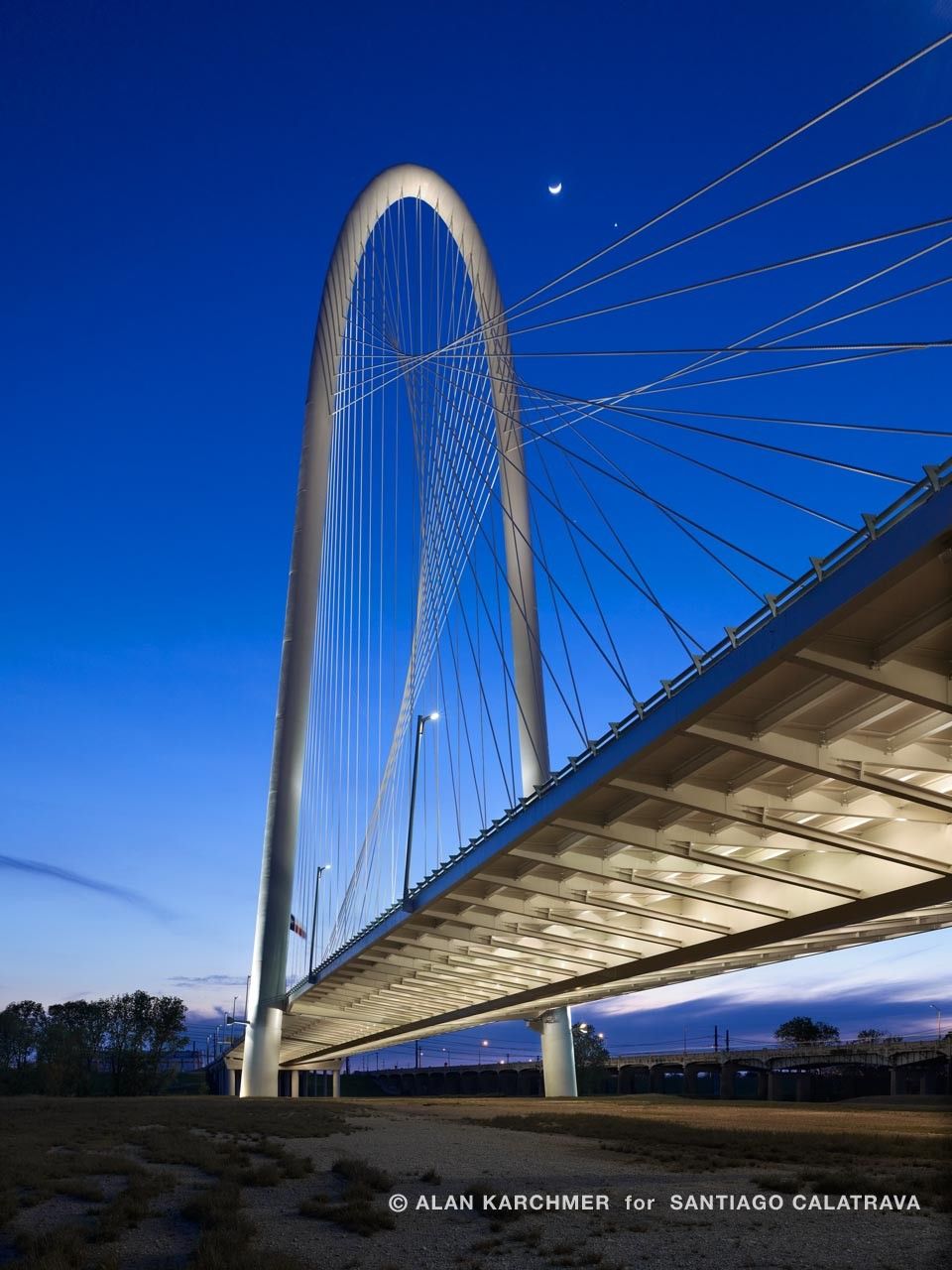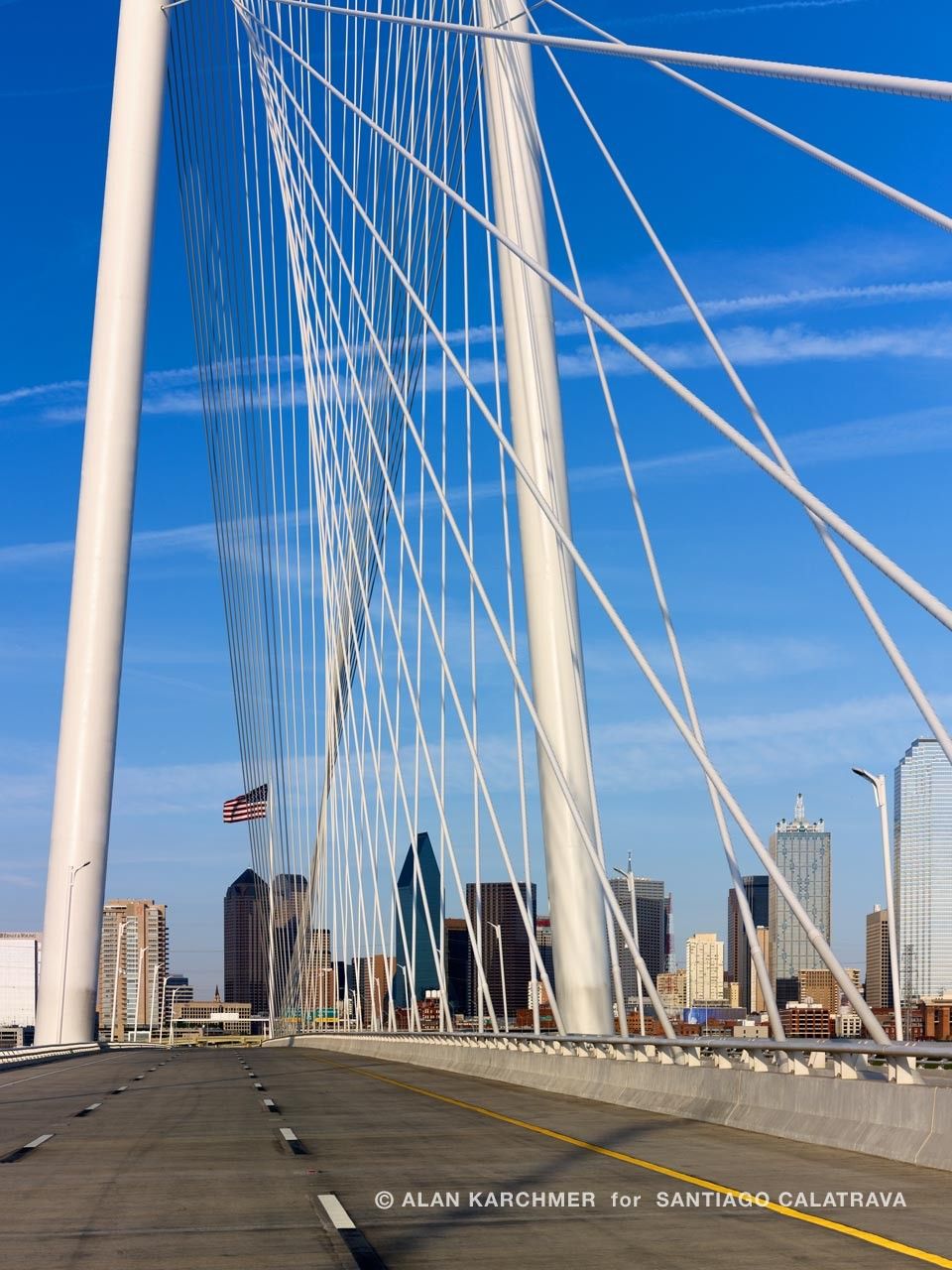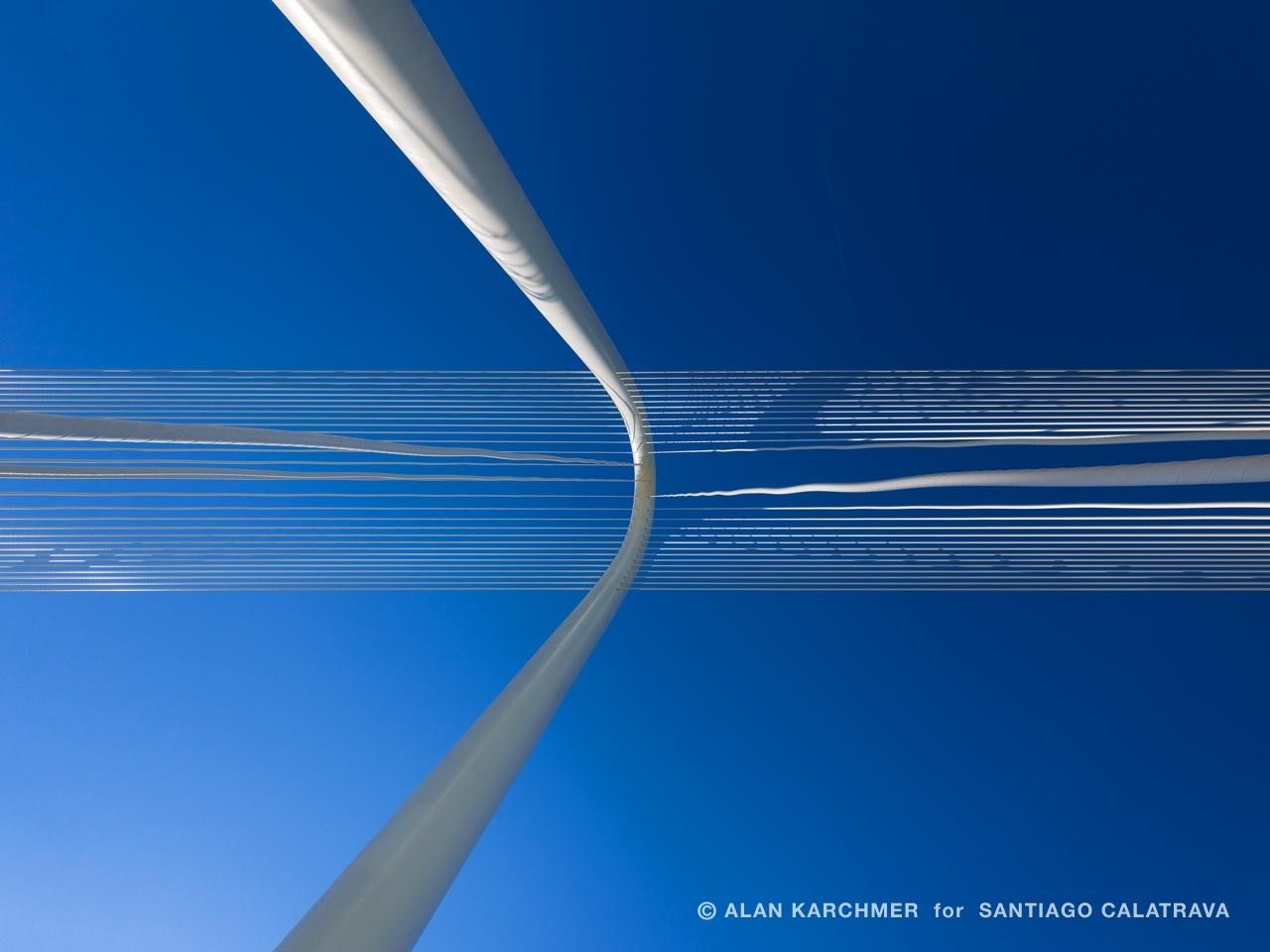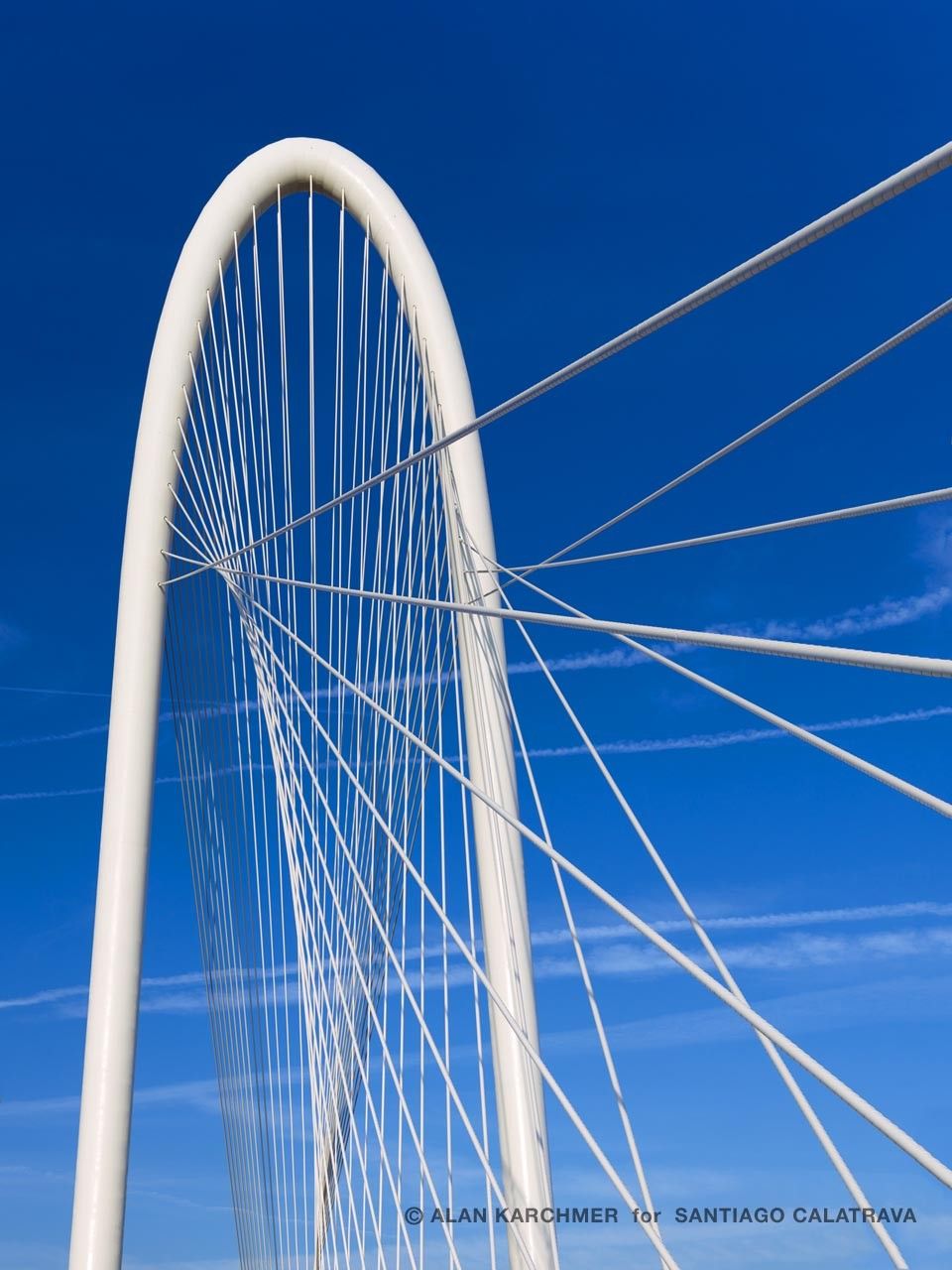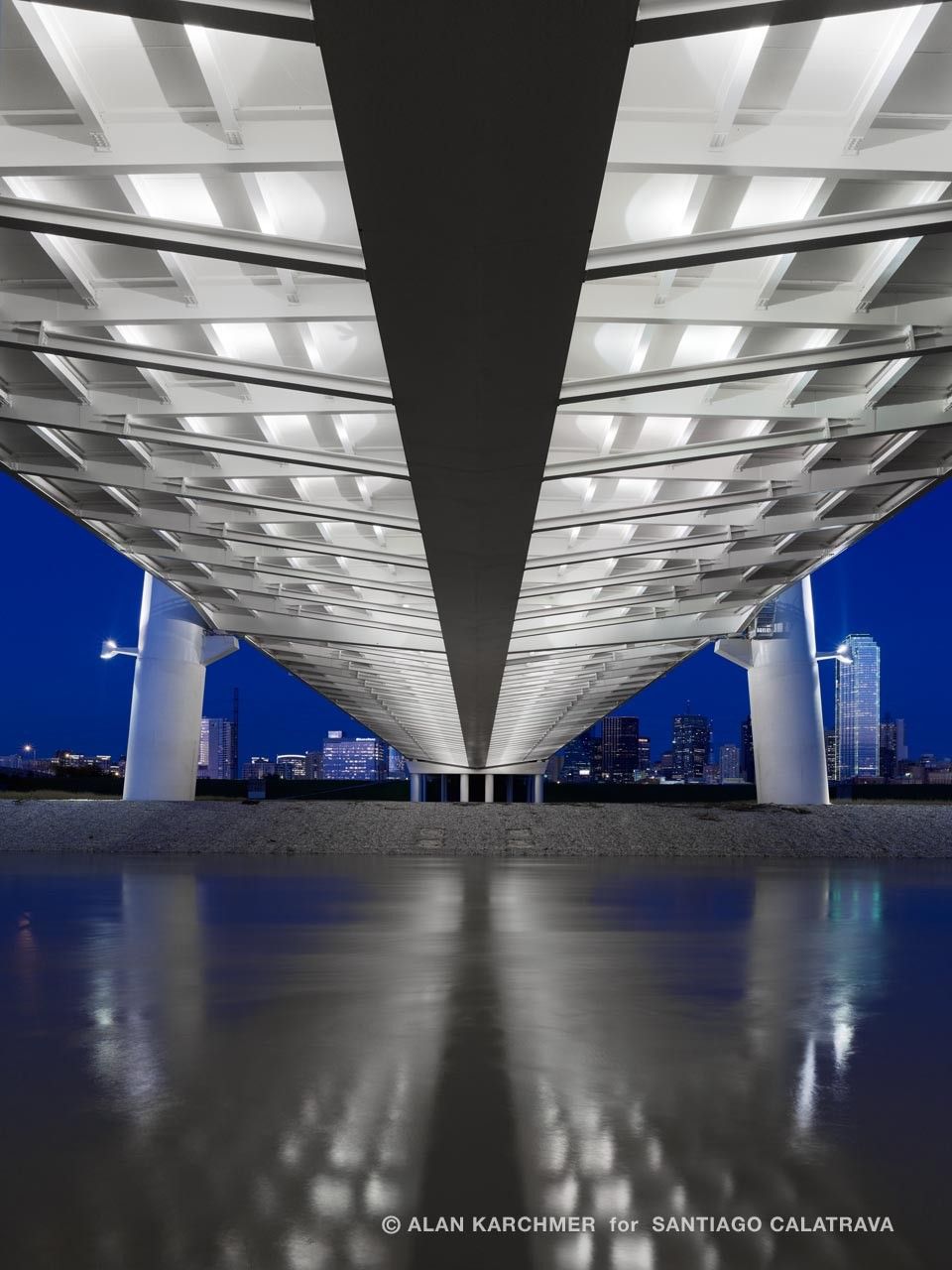The Margaret Hunt Hill Bridge is a bridge in Dallas, Texas which spans the Trinity River and was built as a part of the Trinity River Project. Designed by a well-known Spanish architect Santiago Calatrava, it is one of three bridges planned to be built over the Trinity, the second is the Margaret McDermott Bridge, is currently under construction. The span parallels the Continental Avenue Bridge, a walking bridge. The bridge is named for Margaret Hunt Hill, an heiress and philanthropist.
Read more:
-
Samuel Beckett Bridge | Santiago Calatrava
-
Peace Bridge | Santiago Calatrava
-
Sundial Bridge at Turtle Bay | Santiago Calatrava
According to the architect, the Margaret Hunt Hill Bridge is a very special project. Not only is it a signature component of the City of Dallas’ urban revitalization efforts, but it is also the first vehicular bridge which he has built in the United States.
The structure of Margaret Hunt Hill Bridge
The bridge is a ‘cable stayed’ typology, reinvented by introducing an arched pylon from which cables are dynamically arrayed to support the steel framed highway deck below. The arch is constructed from precision-engineered steel tube sections stacked one on top of the other and welded in place.
The cable-stayed structure supports its 1,870-foot length with a 400 foot tall steel arch with an array of twisting cables. Attached to the underside of the curved pylon, 58 delicate white strands descend and secure themselves along the center line of the platform. The 16-foot diameter support is comprised of 25 individual segments, secured with 20,000 pounds of bolts and additional 450 tons of concrete.
It is visible from all cardinal directions connecting West Dallas with the downtown district of the city. The new landmark will provide six lanes for vehicular traffic and an iconic postcard perspective to define the metropolitan area.
After he was commissioned to design the bridge, Calatrava toured Dallas and noticed that the Trinity River basin was littered with industrial buildings, electrical lines and proposed new toll roads. The team saw this as a lost opportunity for the city since the river basin had the potential to be of defining importance to Dallas’ future development. The concept of linking the city’s two river banks by a series of dramatic bridges and boardwalks across a flooded lakeside environment sought to revitalize this under-used resource in the heart of the city and create a Margaret Hunt Hill bridge park as important to Dallas as Central Park is to New York City.
The opening of the Margaret Hunt Hill Bridge marks a mighty leap towards realizing this goal. The bridge is an aesthetically stunning structure that serves as a new icon for the city’s skyline. Since the arched pylon rose out of the ground in 2010, the bridge has become a landmark for Dallas. The symbolic nature of the bridge focuses attention onto the river and its environs and will act to spur further development of the basin. The large clear span bridge will stand center-stage reflected in the man-made lake of the flooded river basin below.
And as anticipation continues to mount, two of the largest pieces of steel for the Margaret Hunt Hill Bridge have arrived in Dallas. The pieces, which weigh approximately 100,000 pounds each, are part of the distinctive arch feature and centerpiece of the bridge. Other elements of the bridge include a 1,200-foot long span with miles of cable holding the bridge span in place. In order to transport the massive steel, the pieces are shipped from Italy to Houston, where they are then placed on a truck and driven to Dallas.
The Margaret Hunt Hill Bridge is the first of a series of bridges designed to span the Trinity River in downtown Dallas, Texas. Work continues on the design of a new sister bridge further along the basin as part of the scheme for replacement of the Interstate Highway (IH) 30.
“It’s important to remember, that a skyline does not only consist of vertical landmarks.” said Santiago Calatrava “It is also created by horizontal landmarks. And a bridge, more than anything, is both a vertical and horizontal landmark. It’s a functional sculpture over the water”.
Project Info:
Architect: Santiago Calatrava
Location: Dallas, USA
Project Year: 2007- 2012
Crossing River: Trinity River
Design Type: Cable-stayed bridge
Height of Pylon: 136 m (446 ft)
Total Length: 367,6 m (1,206 ft)
Project Name: Margaret Hunt Hill Bridge
All images courtesy of Santiago Calatrava.
photography by © Alan Karchmer
photography by © Alan Karchmer
photography by © Alan Karchmer
photography by © Alan Karchmer
photography by © Alan Karchmer
photography by © Alan Karchmer
photography by © Alan Karchmerphotography by © Alan Karchmer
photography by © Alan Karchmer
photography by © Alan Karchmer
photography by © Alan Karchmer
photography by © Alan Karchmer
photography by © Alan Karchmer


